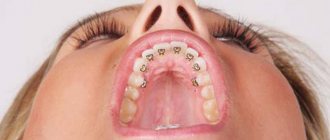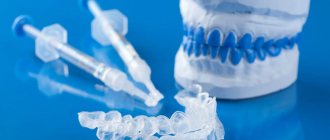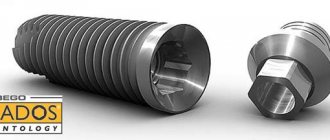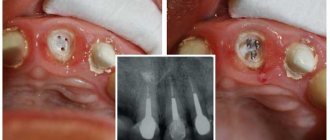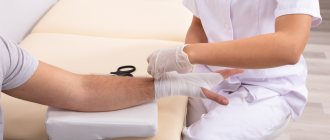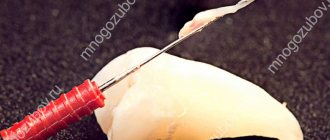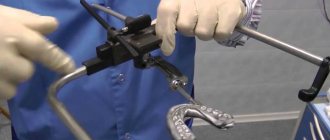Sports mouth guards
A sports lifestyle is becoming more and more popular, and at the same time the number of maxillofacial injuries received during sports is increasing. First of all, the front teeth of the upper jaw are injured; malocclusion in an athlete increases the risk of damage to the dentition.
The most traumatic sports for teeth are hockey, American football, rugby, skating, boxing, kickboxing, but damage to the dentition can occur during any sports activities where contact with a hard surface or other athletes is possible. Professional athletes are required to wear mouthguards; it is recommended that amateur athletes also use this simple but effective means of protection.
Purpose of sports mouthguards, types
What does a mouthguard give an athlete:
- Eliminates the possibility of teeth biting soft tissues at the moment of impact;
- Absorbs and distributes impact energy, thereby reducing the risk of damage to teeth, jaw bones and cervical vertebrae;
- Prevents occlusal contact and injury to opposing teeth during impact;
- Reduces the risk of concussion and the development of neurological disorders;
- Gives the athlete a feeling of confidence in his safety, so during competitions he focuses only on the game;
- Specially made mouthguards increase the strength, endurance and reaction speed of athletes.
Mouth guards can be one-sided (put on one jaw) or two-sided. Also, protective devices are divided into the following groups:
- Standard – sold in sports stores ready-made in several sizes. The disadvantage of such mouthguards is poor fixation on the teeth, lack of individual adjustment to the dentition, low degree of protection;
- Thermoplastic – also sold ready-made, but differ from standard mouthguards in the ability to be adjusted. The material of manufacture is thermoplastic; to adapt to the dentition, the mouth guard is preheated in hot water. They are more comfortable to wear compared to standard ones, but also a little more expensive;
- Individual - made for each athlete according to personal models based on dental casts. It is possible to manufacture mouthguards for teeth with braces, which is important for young athletes, since it is during adolescence that braces are most often installed.
Why is bruxism dangerous?
Bruxism is uncontrollable grinding or clenching of teeth due to spasms in the chewing muscles. This is a fairly common phenomenon, but not all patients realize that the disease poses serious problems:
- pathological abrasion of tooth enamel;
- loss of fillings, crowns;
- dysfunction of the temporomandibular joint (clicking, pain when opening/closing the mouth);
- chronic insomnia and fatigue;
- headaches, dizziness.
Teeth grinding is mainly characteristic of the night, when a person is sleeping and does not control the movements of the jaw. However, in many patients the problem also manifests itself during the day - they involuntarily clench their teeth under stress or when concentrating.
Features and Benefits
The price of a dental night guard for teeth consists of several factors, which primarily include the selected material and manufacturing technology. Onlays used in orthodontics are designed to be worn while sleeping, which allows them to solve a wide range of problems. Modern models, created taking into account the development of the dentition and bite, are recommended in the following situations:
- Retention. Treatment with braces is a long and complex process, which, unfortunately, does not end when the metal structure is removed. Retainers secure the correct position of the elements of the dentition and prevent their reverse displacement.
- Bruxism. Among the pathologies of the jaw region that have a negative impact on the structure of the dentition, one of the most complex phenomena is considered to be bruxism - uncontrolled grinding, attacks of which most often occur during sleep. Excessive pressure on the enamel leads to its damage and destruction, so the best solution would be to buy a night guard for your teeth. Elastic products not only prevent intense occlusal closure, but also relieve stress on muscles and ligaments, helping to correct the bite.
- Snore. The cause of night snoring is often pathologies of the nasopharynx, as well as insufficient muscle tone. Using a mouthguard during sleep helps restore smooth breathing, prevents sound terror, and over time completely eliminates the pathology.
- Whitening and remineralization of enamel. Common difficulties that arise in patients who abuse bad habits include pigmentation and thinning of the enamel coating of the teeth. An increase in sensitivity and a deterioration in the aesthetics of a smile require medical intervention. Thanks to night guards, the use of special fluoridating compounds that strengthen the structure of dental tissue, as well as restoring its natural whiteness, does not create problems for your usual lifestyle.
The choice of a specific orthodontic corrector is determined by clinical indications obtained during diagnosis.
How is bruxism treated?
If a problem occurs, you should contact an orthodontist. He will select a special mouth guard to wear while you sleep. It is an elastic dental splint made of biocompatible plastic. This orthodontic design responds to the load when the patient compresses the dentition, preventing the chewing muscles from overexerting. As a result, the lower jaw relaxes and muscle hypertonicity goes away. Treatment will be effective if you wear the mouth guard for at least 10 hours a day.
What tasks does the mouthguard cope with?
A dental mouthguard also performs the following tasks:
- an individual mouthguard provides prevention of dental misalignment;
- helps maintain the integrity of the enamel, and, therefore, reduce the likelihood of developing caries;
- reduces the risk of developing the consequences of bruxism, namely, headaches, pain in the projection of the jaw, which can radiate to the back and neck.
Dentistry for those who love to smile
+7
Make an appointment
Purposes of using a night guard
- Prevent abrasion of tooth enamel.
- Relieve tension in the chewing muscles of the jaw.
- Normalize the functioning of the temporomandibular joint.
Often, wearing a sleep guard is the first step in correcting your bite and precedes the installation of braces. And in some cases, mouthguards are worn when braces are already installed to protect them from accidental breakage due to involuntary clenching of the jaws. They can also serve as protection for crowns and fixed dentures.
Care of mouth guards
- After wearing the protective mouthguard, it is enough to rinse it with running water at room temperature and dry it; periodically, you can use a toothbrush and toothpaste for cleaning;
- Do not dry the mouthguard with a hairdryer;
- Before putting on the mouth guard, wash it with a solution of chlorhexidine (sold ready-made at the pharmacy) or mouth rinse;
- It is best to store the product in a special container with holes for ventilation to prevent an unpleasant odor;
- During storage, the product should not be exposed to direct sunlight;
- Mouth guards need to be changed periodically, as constant use causes them to deform and become thinner in the area of the cutting edges. In addition, long-term use of the same mouthguard is unhygienic; ideally, replacement should be done every six months;
- Children's protective mouthguards are replaced as the jaw grows, bitten sports mouthguards are replaced with new ones immediately.
Custom mouthguards for bruxism
These are orthodontic structures that are made in a dental laboratory based on impressions of the jaw of a particular patient. They are used in severe cases of the disease, when the symptoms of bruxism are significantly pronounced and serious correction of the dentition is required. The more accurately the design is selected, the more effectively it affects the jaw muscles. Usually, after the patient puts on a dental guard, 10-15 minutes are enough for the muscle spasm to go away and the headache or neck pain to subside. The downside of these structures is that they take quite a long time to produce - up to several weeks, and the patient often needs to start treatment as soon as possible.
Mouth guards made using neuromuscular technology
The neuromuscular mouthguard is a unique development of sports dentists; the device not only protects the athlete from injury, but also increases the strength of the shoulder girdle muscles by 30%. For the average person, this result seems implausible, but the effectiveness of neuromuscular mouth guards has been proven.
Scientific studies have found that athletes constantly clench their teeth during training and competition, which leads to tension in the muscles of the neck, shoulders and back. Unnecessary muscle tone leads to loss of energy, and this affects the athlete’s strength performance and reduces athletic performance. Neuromuscular mouthguards solve the problem - they allow you to fix the position of the lower jaw in such a way that the muscles are in a state of minimal tension at the moment of clenching the teeth. Thanks to this, the athlete’s muscular frame is stabilized, and the amount of energy required for victory increases.
These mouthguards are the most customized and expensive.
Our clinic’s specialists manufacture individual Dental Guard sports mouthguards (Agility Guard company) using neuromuscular technology in this way: electrodes are fixed on the client’s face and neck, which transmit a signal about the strength of muscle contraction to the computer screen. The athlete opens and closes his mouth, while the dentist, based on sensor readings, looks for a position in which muscle tension reaches a minimum value. When such a position is found, a mouth guard is made in the laboratory based on the impression and computer data.
What does a neuromuscular mouth guard provide to an athlete:
- Increases strength and endurance;
- Reduces sensitivity to pain;
- Improves accuracy and speed of movements;
- Prevents the impact force from being reduced when re-stressing.
Due to the fact that the mouth guard improves strength and speed performance, it is used by athletes in those sports where dental protection is not traditionally used. In this case, a mouth guard is made without a protective function; its purpose is to eliminate reflex overstrain of the muscles of the shoulders, back and arms.
How are mouth guards made?
Regardless of the type of structure, its production should take a minimum amount of time, up to a maximum of five days. The manufacturing process involves several stages, the main task of which is to achieve complete adherence of the structure to the surface of the teeth.
Photo: Making mouth guards
Let's look at the manufacturing stages in more detail:
- Taking impressions. At this stage, the specialist covers the surface of the patient’s teeth with a dense elastic mass. An impression tray is used for this. Next, the patient clenches his jaw, after which the impression will be completely ready.
- Casting a plaster model. For this, a mixture of gypsum powder and water is used. These actions are carried out by dental laboratory specialists. The mixture should have a creamy consistency and be applied directly to the previously made impression. After this, a certain time is allotted for the plaster to harden, after which the model is ready.
- Making a mouth guard. The mouthguard is made of bioplastic or biosilicone, which allow the production of high-precision structures. These materials can initially be either a plastic mass or plates. In order to make a mouthguard, a molding machine is used, which creates a pressure of up to 6 atmospheres at a temperature of about 140 degrees Celsius. After this, the finished product is laminated.
- Carrying out fitting. The finished mouthguard is tried on in the dental office. If any inaccuracies are found in the design, they are corrected so that no discomfort occurs when wearing the design. In order not to injure the patient’s gums, the inner surface of the structure is made soft, while the outer surface is more durable and hard.
A mouthguard does not allow you to get rid of bruxism, but it protects your teeth and jaws from the unpleasant consequences of night grinding. Today, such designs are the most popular in the treatment of bruxism in adults and children.
We recommend that you pay attention to:
- What are the main causes of bruxism and how to cope with teeth grinding
- Causes and treatment of teeth grinding at night in children and adults
- 6 reasons for pathological tooth wear + treatment
- 6 recommendations for treating bruxism in children
- Bruxism in adults - what it is and how to treat it
What is a night guard for straightening teeth?
Aligners or aligners are popular and in-demand designs. They were first used about fifteen years ago. A mouthguard is a special silicone pad that is placed on the surface of the teeth. In addition to silicone, mouth guards can also be made from other materials that have sufficient elasticity. These products are placed directly on the teeth. They have the most soft and gentle effect. It should be said right away that mouth guards are only necessary for minor bite pathologies. Only braces can cope with serious anomalies. Quite often, dentists prescribe patients to wear mouth guards after removing braces in order to consolidate the result. You can find out how much it costs to make a structure from your doctor.
How are mouth guards made for teeth grinding?
The manufacture of these structures is carried out in special laboratories. For this purpose, modern high-quality polymers are used. They are resistant to mechanical and chemical influences and also have a long service life. Such materials can have different colors - from transparent to any bright shades.
To custom make a structure for bruxism, a specialist must first make an impression of the patient’s jaw. This is necessary in order to see the exact location of the jaw, as well as to note all the irregularities of the dentition. Thanks to this, you can make a model that exactly matches the surface of the teeth and will not cause discomfort while wearing.
Production time
The time required to manufacture the structure depends on the material used, as well as on the structural features of the patient’s dentition. There are cases when, after fitting, the doctor identifies certain inconsistencies that also need to be eliminated.
Usually it is possible to make a high-quality structure for the treatment of bruxism in 1-1.5 weeks. If there are serious violations, the dentist may recommend urgent production.
Important! The period required to manufacture the structure should be taken into account when ordering a second copy. Since there can be no pauses in therapy, it is better to order it even before the first one becomes unusable.
Efficiency
The first thing to clarify is that a mouthguard for bruxism is not a treatment. It only eliminates symptoms and protects teeth from destruction or loosening. Essentially, she takes the hit herself. Instead of wearing away enamel and dentin, you destroy plastic, which can then be replaced with a new one, created from a ready-made exact cast of your jaw.
Considering that among the main causes of teeth grinding are psychological issues related to stress and other problems, you need to combine the use of mouthguards with the help of a psychologist, the use of massages and other methods of relaxation. If necessary, medications may be prescribed. You may need to consult a neurologist.
General overview
An unloading tray is an overlay made of elastic material that follows the shape and fits tightly along the entire length of the dentition, the task of which is to redistribute the load on the jaw region. The installed orthodontic apparatus helps relieve pain, eliminate muscle hypertonicity, as well as normalize the occlusal relationship and jaw balance.
The use of biocompatible materials eliminates the development of an allergic reaction and a health hazard when wearing the corrector for a long time. The ease of removal and installation makes the use of the mouthguard comfortable even for patients of a younger age group, and the aesthetic appearance eliminates the psychological problems inherent in wearing permanent corrective structures.
Advantages and disadvantages
The main advantage is the ease of use of the record. At the right time, the patient simply puts on the mouthguard and can also easily remove it. It is very easy to care for the device. To arouse interest among very young patients, the design can be decorated with drawings.
The main disadvantage is the adaptation period. It takes about a week to get used to the design. But, taking into account the nuance that with bruxism, as a rule, mouthguards are worn only during sleep, this disadvantage disappears.
Kinds
To eliminate this pathology, a huge number of designs have been developed. They are grouped by type depending on the following factors:
- Time of use;
- Technological features of production;
- In terms of direction – repositioning.
In accordance with these criteria, each type of device has its own individual requirements, thanks to which the design successfully copes with the task assigned to it. It is advisable to consider in more detail how this classification occurs.
Night, day and other types of mouth guards
Nighttime teeth grinding is only a single manifestation of bruxism. It is necessary to deal with the problem around the clock. Therefore, there are both night and day mouth guards, which have design differences for greater efficiency. And in order for the treatment to be as complete as possible, special resonating mouthguards are also used, which are used in cases where the disease manifests itself especially acutely. They move the head of the joint, due to which muscle spasm weakens or does not occur at all.
Thermoplastic
They are produced in laboratory conditions from high-quality modern material – medical silicone. This is a unique component that has a number of undeniable advantages:
- Complete safety for health;
- Almost absolute hypoallergenicity - cases where individual intolerance to the material is identified are extremely rare;
- Does not provoke the development of caries;
- Reliably protects tooth enamel from abrasion and premature destruction.
The main advantage of silicone is the ability to change its shape even when exposed to hot water. Having slightly warmed up the product in this way, it is then immediately directed into the oral cavity, and the structure takes the specified position, taking into account the individual anatomical characteristics of the patient. Let's see how this happens:
Thermoplastic mouthguards are considered one of the most comfortable and rarely cause discomfort even during the adaptation period.
You can buy them both in the pharmacy chain and in almost any sports equipment store, however, preference should still be given to certified medical designs.
Universal
They are characterized by a less pronounced effect on the correction of teeth, and, therefore, do not give such a high result in the treatment process than the product described above. Its undeniable advantage is the low price.
Flaws:
- The model has a standard shape and is not able to take into account the anatomical features of the structure of the jaw apparatus;
- In the production process of mouth guards, mainly low-grade materials are used, which often provoke allergies. They can cause discomfort during use, and in some cases can provoke the development of malocclusions, which will subsequently have to be further treated.
The use of universal mouthguards is necessarily accompanied by complex therapy, taking medications containing large quantities of calcium, which strengthens bone tissue, magnesium and vitamin B complex.
It is important to understand that if this disease is the result of bite deviations, in parallel you should be observed by an orthodontist and, if necessary, receive appropriate treatment.
Another significant drawback of universal models is the appearance of bad breath. This arises from the fact that the material, which is of low quality, absorbs foreign odors, which are then almost impossible to eliminate.
Daytime
The devices imply their use throughout the day. Prescribed for complex forms of pathology, when the symptoms of the disease are expressed not only at the time of sleep, but also while awake. Most often, the patient can perform self-control of jaw clenching, but in advanced stages this is either very difficult or impossible.
Such devices are also called buses. Their use is comfortable, and their presence in the oral cavity is almost invisible to others. They must be used constantly throughout the day. The devices do not cause discomfort during eating and do not affect the quality of speech pronunciation.
Minor inconveniences may occur only at the adaptation stage, but after a few days the phenomenon goes away on its own.
The specificity of structures of this type lies in their placement deep enough in the cavity to avoid complete closure of the teeth.
They are placed and adjusted to the correct position only in a medical institution. If this is done incorrectly, not only will it not be possible to achieve a positive result, but it can seriously harm your health, exacerbating the disease, or causing additional complications.
Recommendations for care and storage
It is very easy to maintain the structure. To do this, you should adhere to the following recommendations:
- After use, it must be rinsed with running water to remove bacteria, food debris, etc. If it becomes very dirty, you can use your usual toothpaste and brush.
- After washing, the structure should be carefully wiped.
- Do not expose the plate to high temperatures. It should not be boiled or dried with a hairdryer. Also, do not leave the plate in the open sun.
Throughout the entire period of using the bruxism mouth guard, the patient should carefully monitor its condition. If any deformations occur in the design, this may indicate that it is not suitable, or that the person has begun to experience complications. In each of these cases, you must immediately consult your doctor.
It is better to use special containers for storage. They can be ordered during the purchase of the structure itself. They will keep the plate clean and prevent any damage.
Functions
Main functions of structures:
- Protecting the enamel surface from early abrasion;
- Protection of organs from destruction;
- Maintaining the integrity of prosthetic devices;
- Minimizing pressure on the articular head during spasm;
- Elimination of muscle pain;
- Protection against deformation and development of inflammatory processes;
- Prevention against mobility, loosening and displacement of malocclusions;
- Muscle relaxation during sleep.
What it is
A mouthguard for bruxism is a plate that is worn on one or two jaws at once. The main function of the plate is to prevent the teeth from closing together, which prevents teeth from rubbing against each other during a spasm. This method makes it possible to preserve the integrity of tooth enamel.
What else does a mouthguard do:
- reduces muscle pain that appears in the jaw area during spasm;
- reduces the load on the jaw, which makes it possible to avoid the development of other pathologies;
- returns normal sleep to the patient.
But the record itself is not a complete treatment for the disease. The mouthguard is an assistive device. To treat bruxism, a comprehensive approach aimed at relieving spasms is required.
Indications and contraindications
The main indication is the symptoms of bruxism and the frequency and intensity of their manifestation. The use of mouthguards is completely safe, so there are practically no contraindications. The only contraindication may be mental disorders. For example, using a mouthguard for epilepsy is extremely dangerous, since during an attack the patient may swallow the device.
Other indications include:
- deformation of the dentition;
- abnormal bite;
- interdental spaces.
Similar problems can arise as a result of bruxism.
Night guards for straightening teeth
Being elastic, the product does not injure the gums. The trays are completely colorless and cannot be seen in the mouth. There are models that need to be worn not only at night, but also during the day. Such structures need to be removed only for eating and during hygiene procedures. Unlike braces, they are easy and quick to take off and put on. Aligners are made individually for each patient and are usually supplied in a set, which can contain from two to thirty pieces, depending on the course of treatment. The aligners need to be changed once every 1.5-3 months.
Kinds
Alignment aligners are very diverse. Depending on the manufacturing method, the product may be:
- Individual - they are made for a specific patient. A 3D model of the jaw is first made. Such products are effective and convenient.
- Thermoplastic - made from a special material that can soften in warm water. Heated products are placed on the dentition. The cooled mouthguard will take the required shape.
Depending on what material the product is made of, aligners can be silicone or plastic. Both options are very similar.
By wearing time:
- Those that need to be worn 24 hours a day. Dentists recommend wearing these aligners 22 hours a day and removing them only before brushing your teeth and eating.
- Sleep guards. Used to eliminate minor anomalies. They are also used when there is a need to consolidate the result after a course of wearing braces. Night guards are worn only at night. Silicone mouth guards for teeth at night are especially popular.
According to age category, there are:
- For adults. According to statistics, mouth guards are more often used for adult patients.
- Children's night guards for teeth. Children are reluctant to wear orthodontic appliances, so treatment can take quite a long time. Due to their specific characteristics, children's teeth can be straightened quite quickly if you follow the dentist's recommendations. Children's mouthguards are very comfortable and do not differ from models for adults. In terms of function, these are absolutely identical products.

